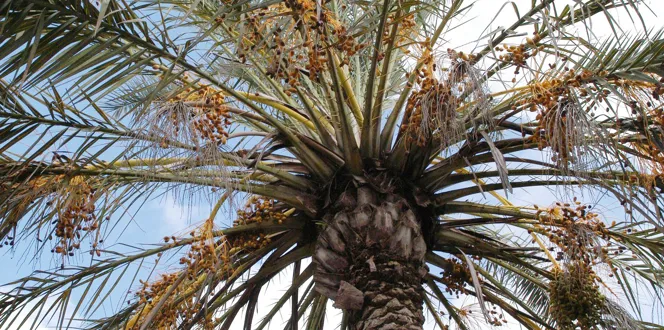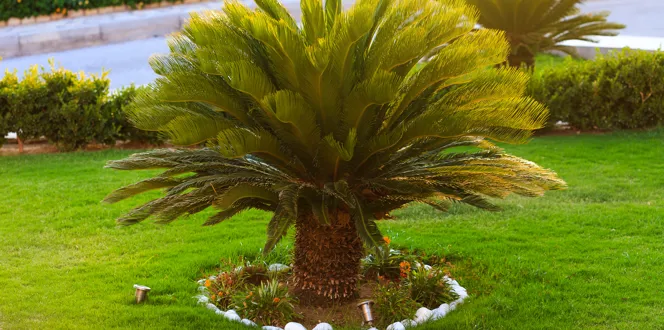Ah, the look of lush green palm tree leaves against a pure blue sky will have you dreaming of paradise.
But nothing snaps you back to reality faster than a palm tree with droopy, discolored leaves. What’s there to do when your palm doesn’t look its best? If you’re like Davey blog reader Jack from California, that question might have you a little stumped. Jack tried out a bunch of fertilizers and a whole new water regimen on his foxtail palm tree but had no luck repairing its yellow, droopy leaves.
Get back to enjoying your dreamy palm trees with this advice on restoring a droopy, brown tree.
Why palm tree leaves are turning brown on outdoor palm trees
Here’s the deal—there are a number of reasons why your palm might have switched up its appearance. Yellow, brown or droopy leaves could mean:
- The tree isn’t getting enough water;
- The soil is short on key nutrients like nitrogen or magnesium;
- Pesky palm tree weevils, spider mites, aphids or some other insect got a hold of your tree;
- A fungal infection like Ganoderma root rot is at work; or
- The natural ebb and flow of palm leaves is putting a temporary yellow tint on your tree
So, as you can see, there’s a lot to consider! Let's break it down a bit and talk about how to diagnose your particular palm.
What if I see brown leaves on my canary palm or majesty palm?
Canary Island Date palms or majesty palms can suffer from any one of the offenders mentioned above. But some pests or diseases do affect palm trees differently.
For example, Canary Island Date palms are vulnerable to Texas Phoenix Palm Decline (TPPD) also known as Lethal Bronzing, a disease that yellows palm leaves in its early stages. But you can likely rule out TPPD on your majesty palm, which isn’t on the shortlist of common tree targets.
The fact is, a problem with palm leaves is less about the kind of tree you have and more about the care you give it.
Should I cut off brown palm leaves?
If just the tips of your palm tree’s leaves are brown, don’t pull out the pruners just yet.
“Brown tips are a sign of a stressed tree that has a chance at bouncing back,” said Rich Wiland from Davey’s Naples, Florida office. “You can actually do your tree a disservice by jumping the gun and removing leaves that aren’t completely dead.”
That being said, full-on brown leaves should be pruned to keep your palm looking and feeling healthy. If you need a little help deciding when or how to prune your palm check out this blog post.
How to help palm trees with brown, drooping leaves
OK, let’s run through the ways to help your troubled palm tree one by one.
First things first, remember that yellow leaves sometimes appear as part of a palm’s natural growth process. As long as yellow leaves are only in the bottom of the canopy, and the top is nice and green, your tree is alright.
If you suspect Mother Nature isn’t at work, next stop is the soil. Soil that’s dry to the touch points to a dehydrated tree, but over-saturated soil can also make leaves change color. For a happy medium water your palm tree before the soil hits a dry spell, and monitor the amount of water going in by using the deep watering method.
Palm tree soil is also where you’d find any nutrient deficiencies that are hurting your plant. To pinpoint the problem, your tree needs a soil test, which you can do yourself or have a professional arborist handle. The results will tell you what nutrients your plant soil is lacking so you can find a fertilizer to fill the gap.
And, last but not least, a palm tree suffering from pests or diseases needs an arborist’s attention. The fix might be as simple as applying an insecticide, but it’s hard to recommend what treatment will work without getting a good look at the tree.





